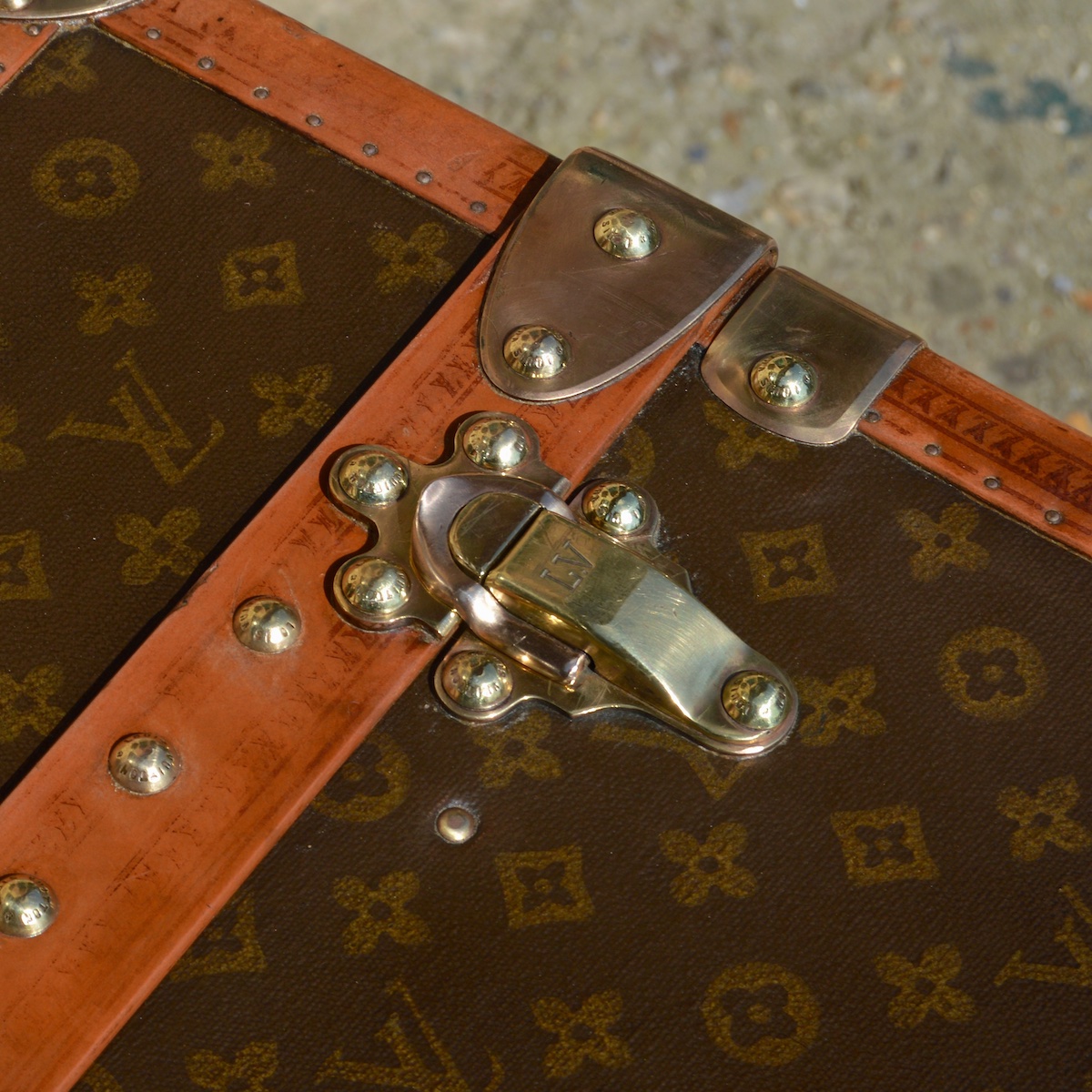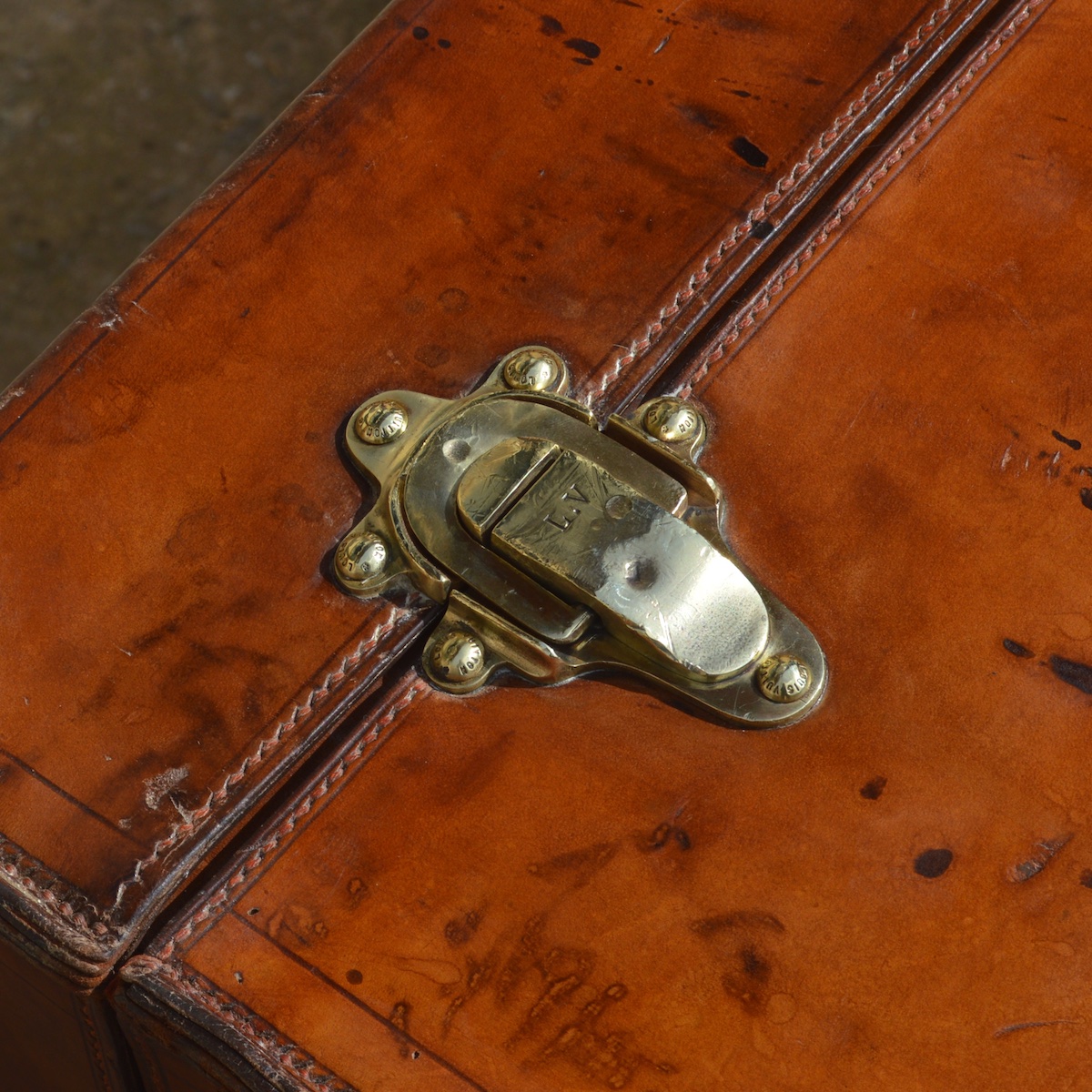We use cookies to make your experience better. To comply with the new e-Privacy directive, we need to ask for your consent to set the cookies. Learn more.
The different locks
The flat locks
From 1860 to 1890 - At the beginning of its production, Louis Vuitton used "flat" clasps with a simple hasp without springs or engraving and only in metal or brass. Around 1885/1890, more elaborate flat clasps with a hasp engraved with the name and address of the brand were produced. These locks were very beautiful but you could access the contents of the trunk with a simple hammer blow.
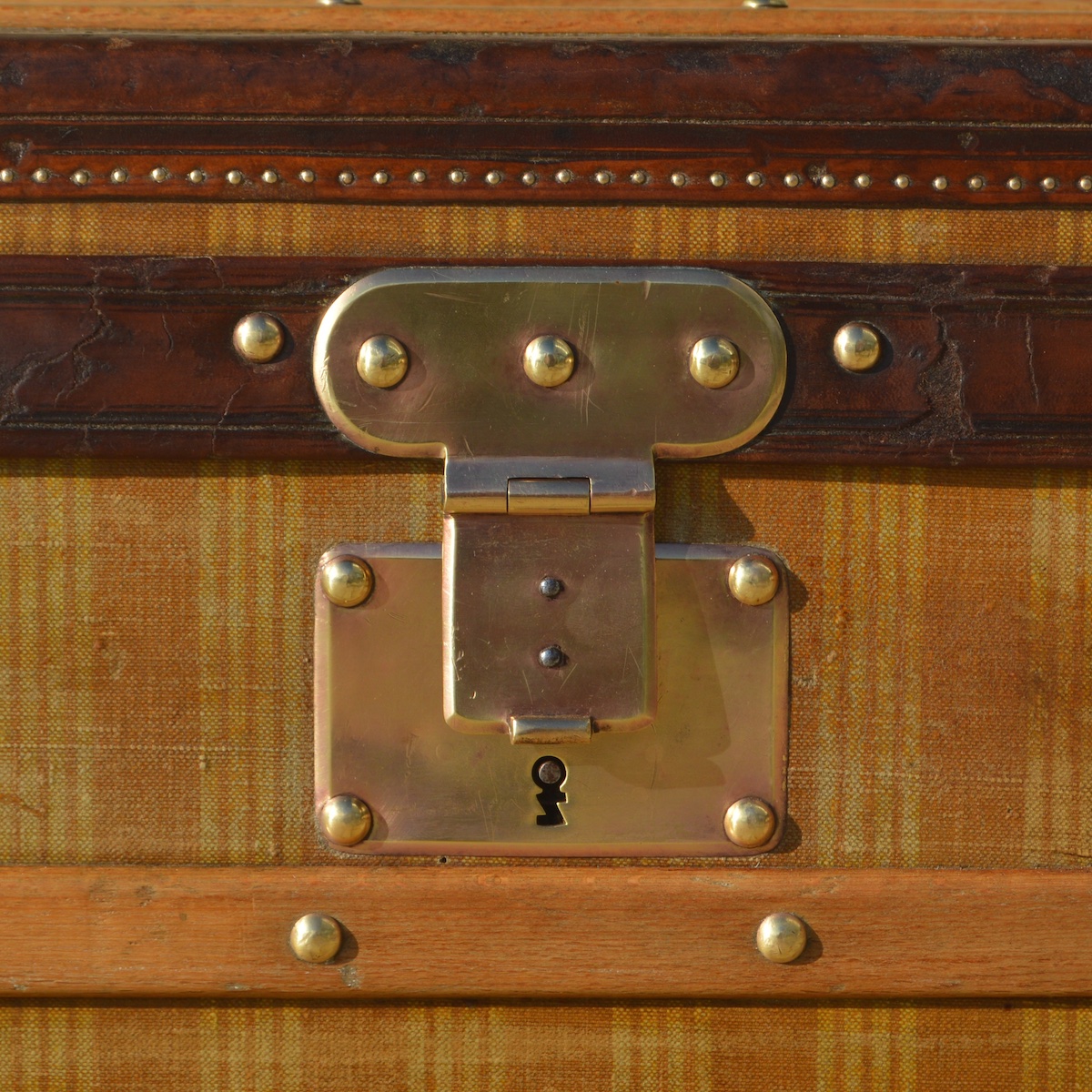
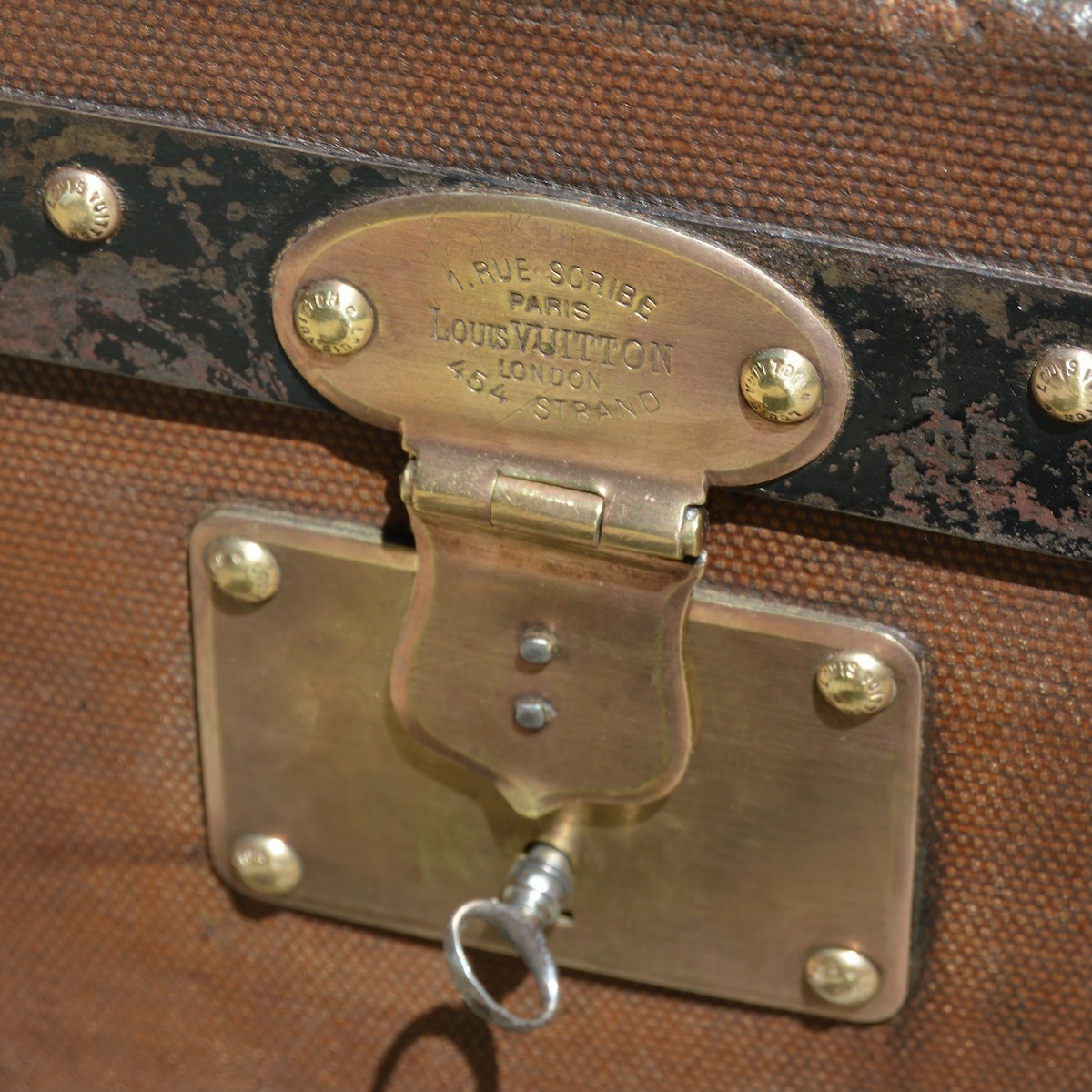
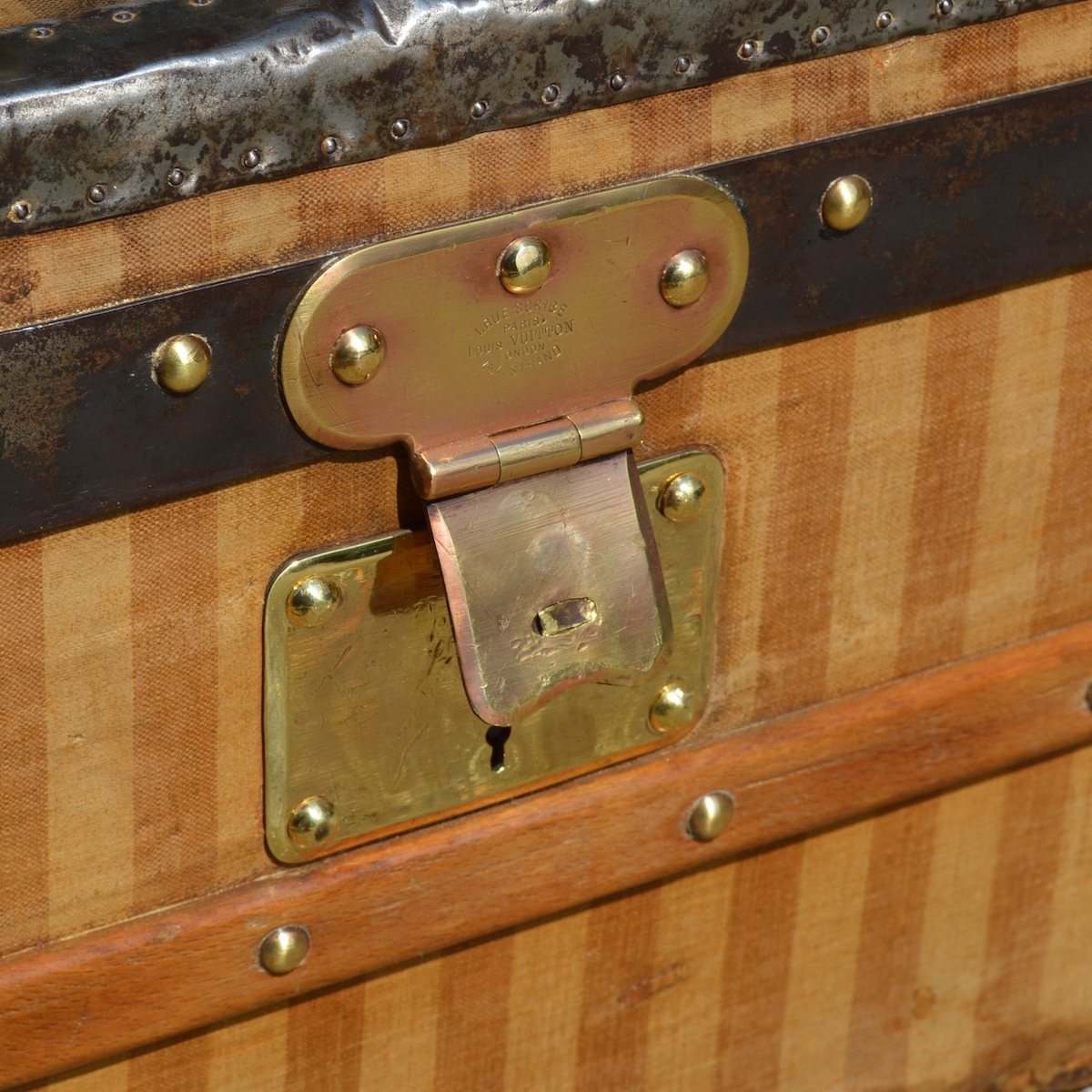
THE « V » locks
The so-called "V" lock, which appeared in 1890 and was registered around 1905, had a considerable impact on Louis-Vuitton. The first lock with a tumbler system, it made it possible for the first time to offer a series of different pieces of luggage with the same key. These locks were made of two materials, brass and metal (copper and aluminium on certain special orders).
They were said to be "non-pickable" thanks to a system of grooves protected behind the cast and a hasp riveted directly under the head of the lock. There are 5 numbered tumblers of different shapes inside the case. Each of the shapes of each of the grooves corresponds to a notch on the key. The order of the grooves corresponds to the order of the numbers on the key or engraved on the lock.
This innovative system allowed Louis Vuitton to re-create a key at any time for any luggage that had this lock, simply with a serial number. It also allowed the trunk-maker's customers to use the same key for multiple pieces of luggage. Some very special lock orders also allowed the customer to use the same key for their trunks, front door, car, etc.
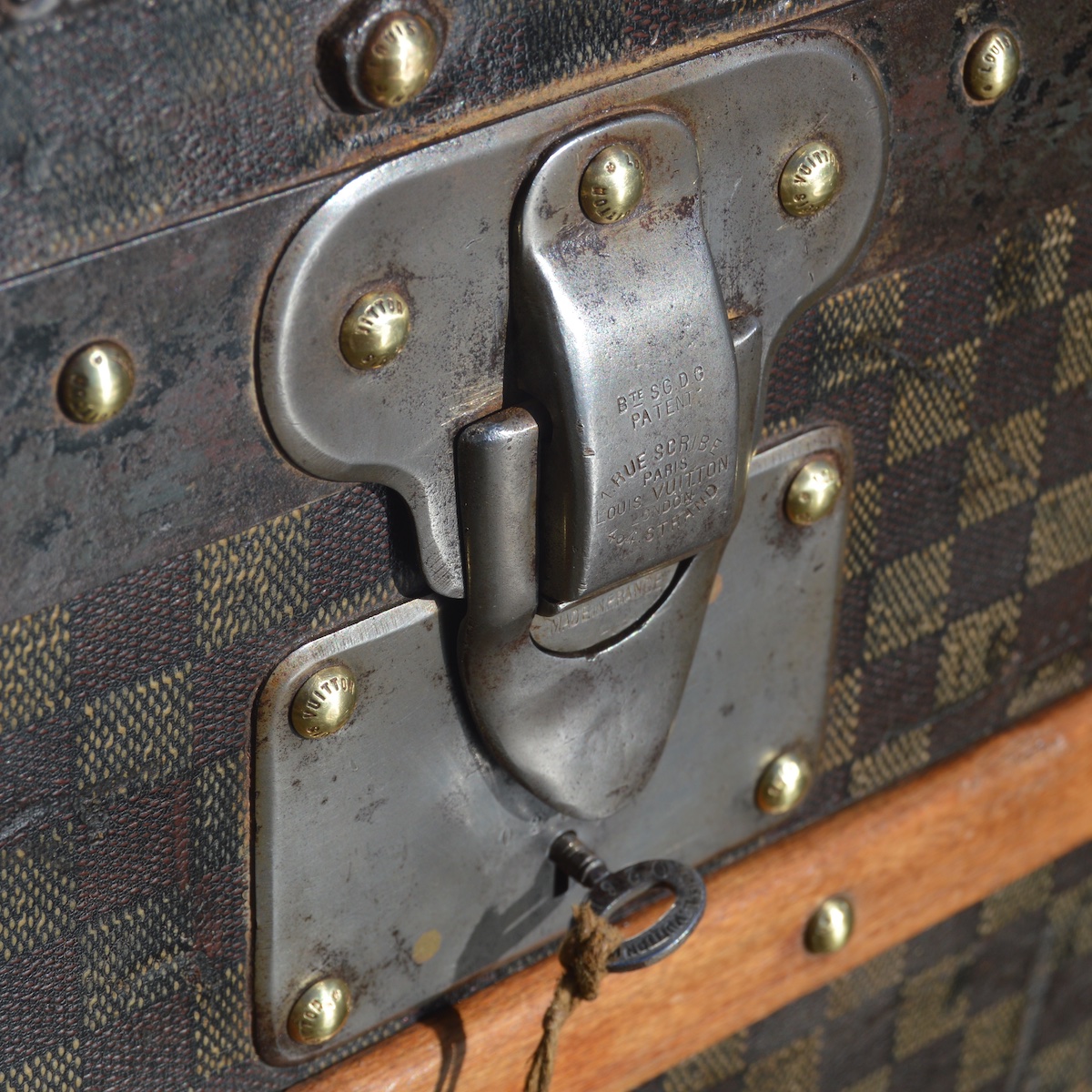

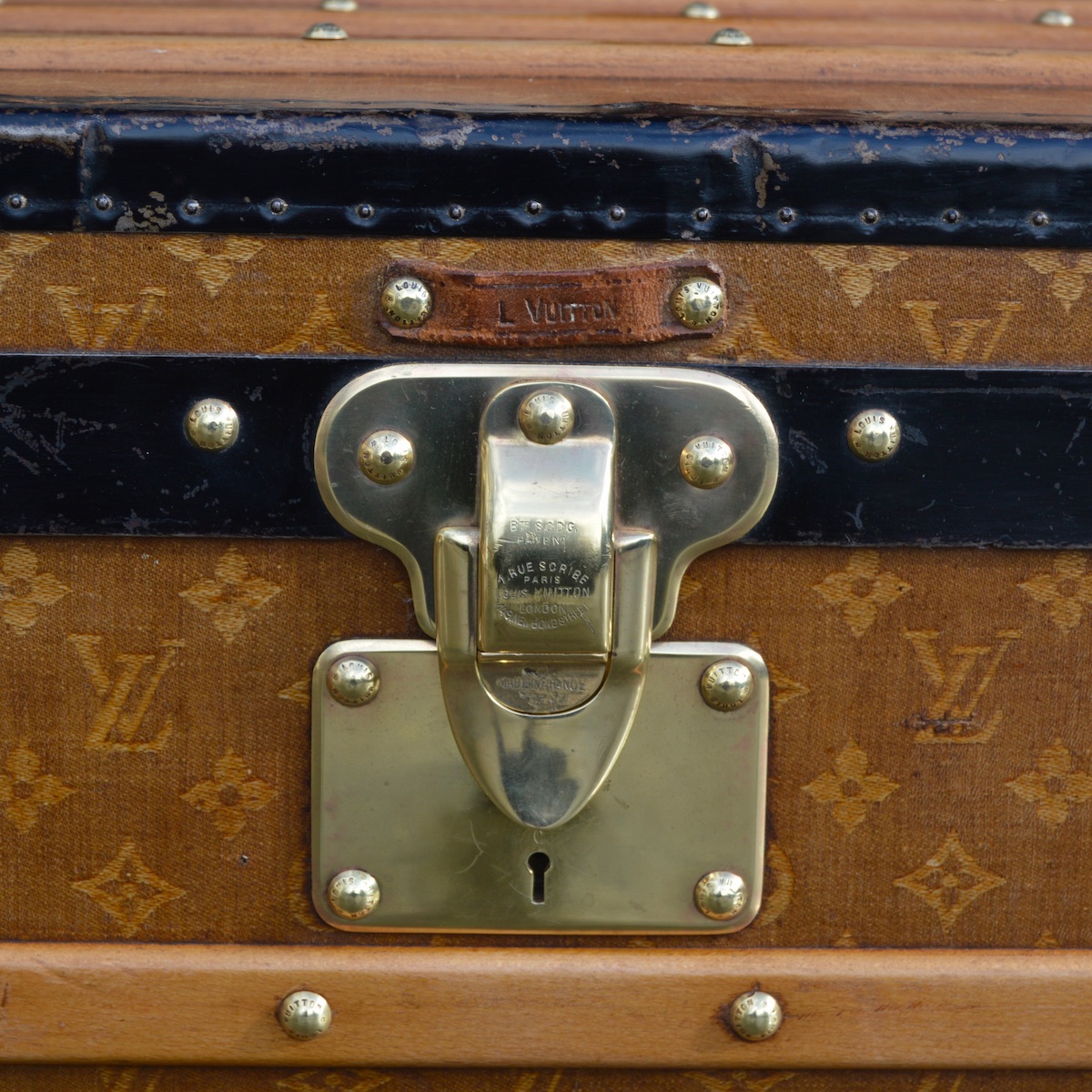
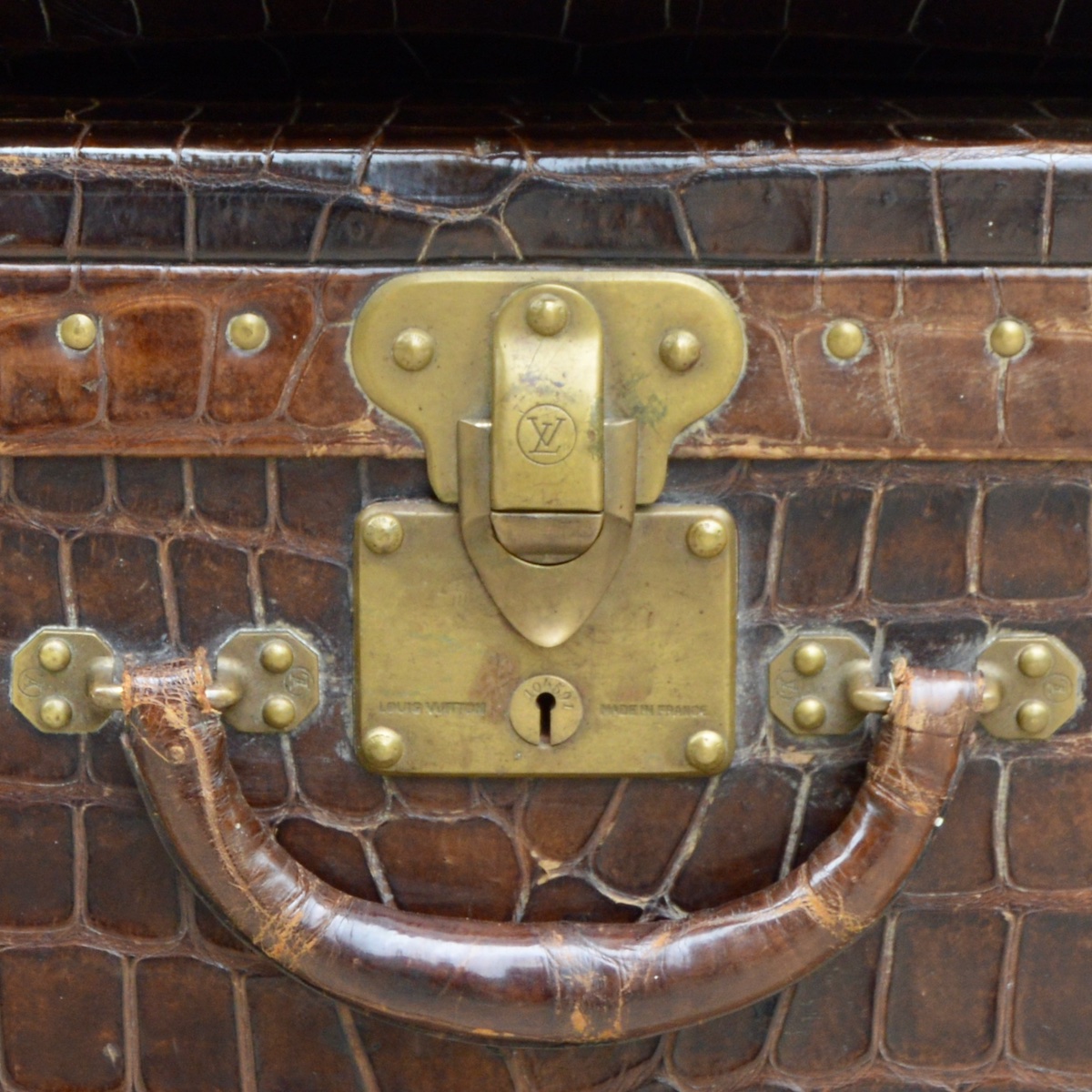
The suitcase locks
From 1890 to 1930 - The dates become much more approximate as many different clasps appear during this period.
In 1910 we find a lock for a suit door with the particularity of forming an L and a V intertwined on the push button. This very art deco clasp is today among the most complicated to find.
For dress doors, it is generally "English" type clasps that are used, with a push button including the lock hole in the centre of the piece.

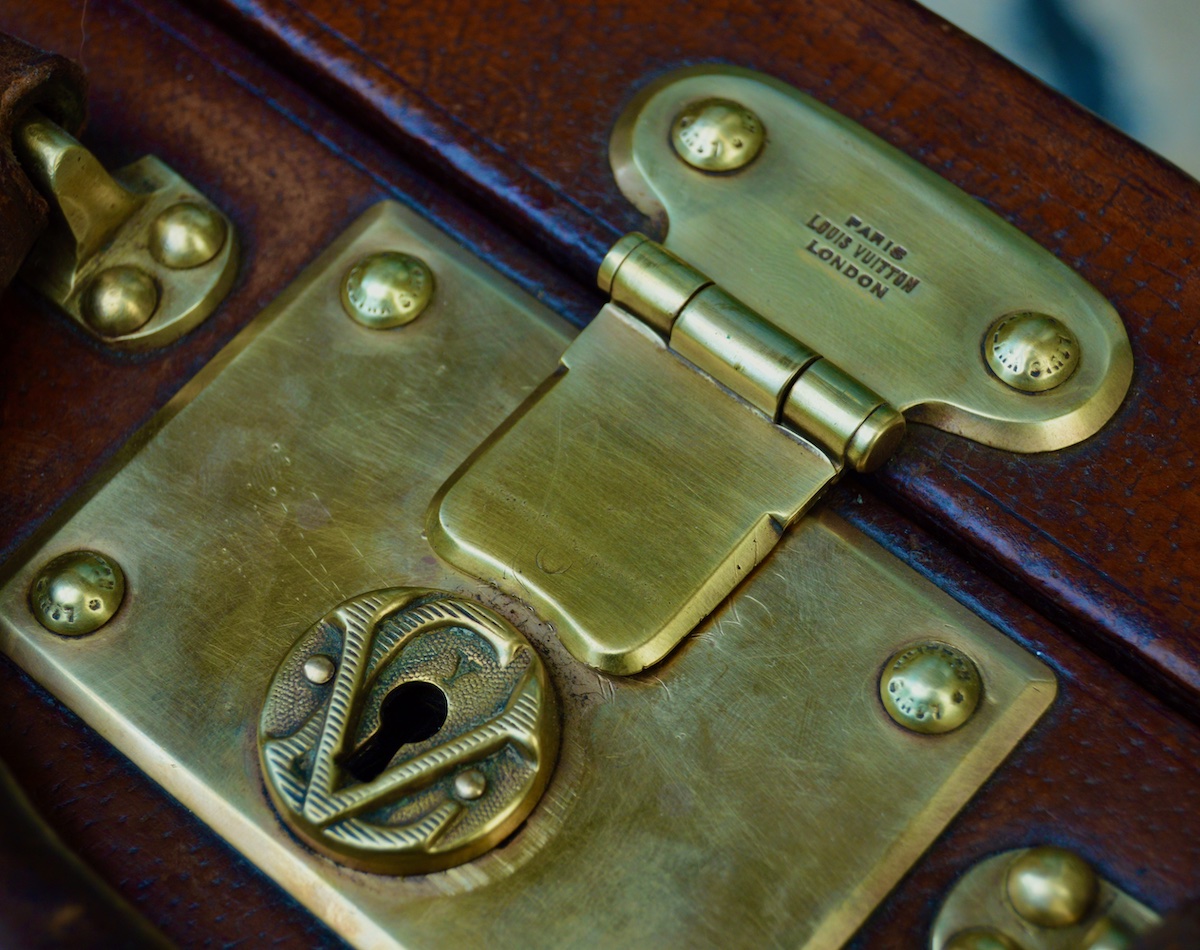
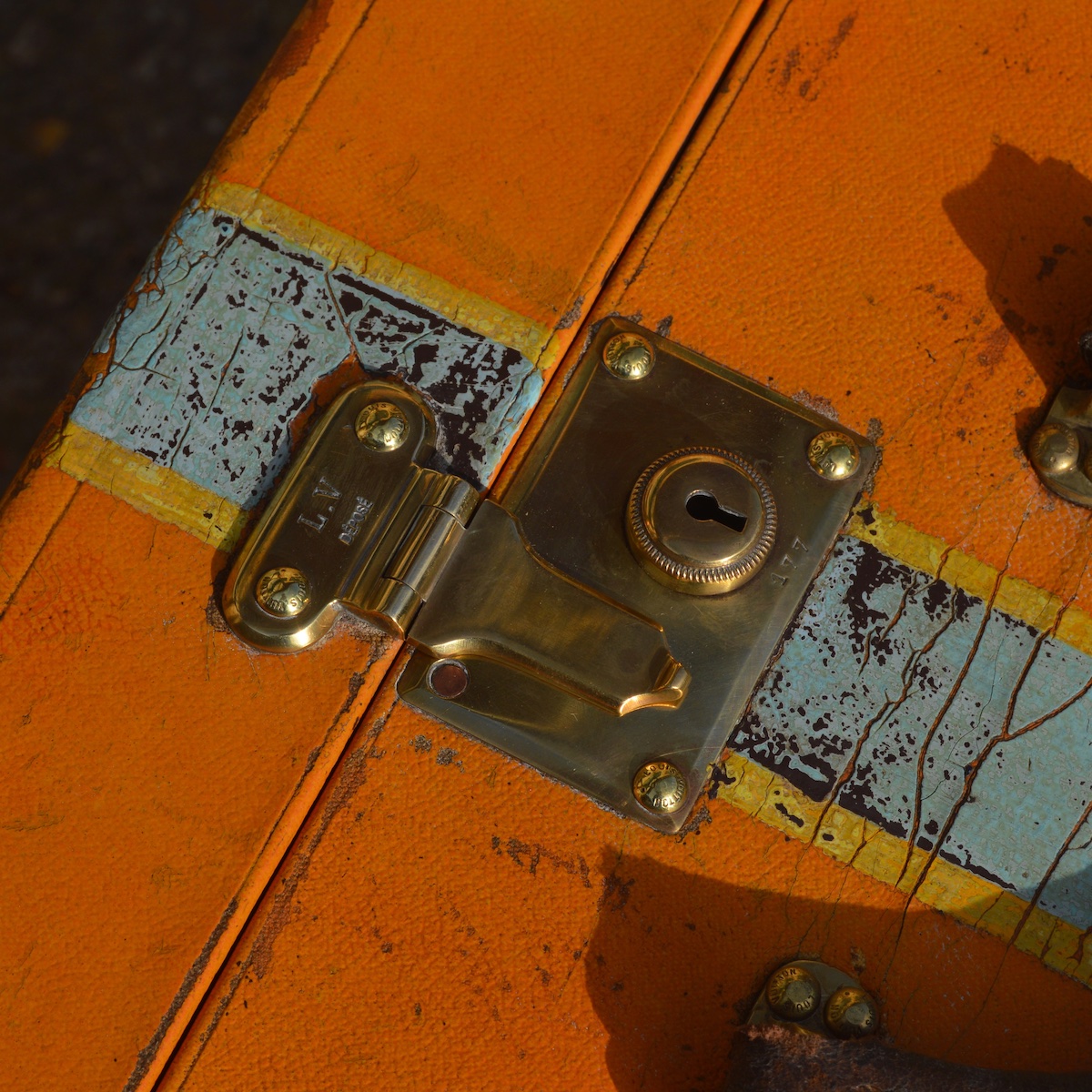
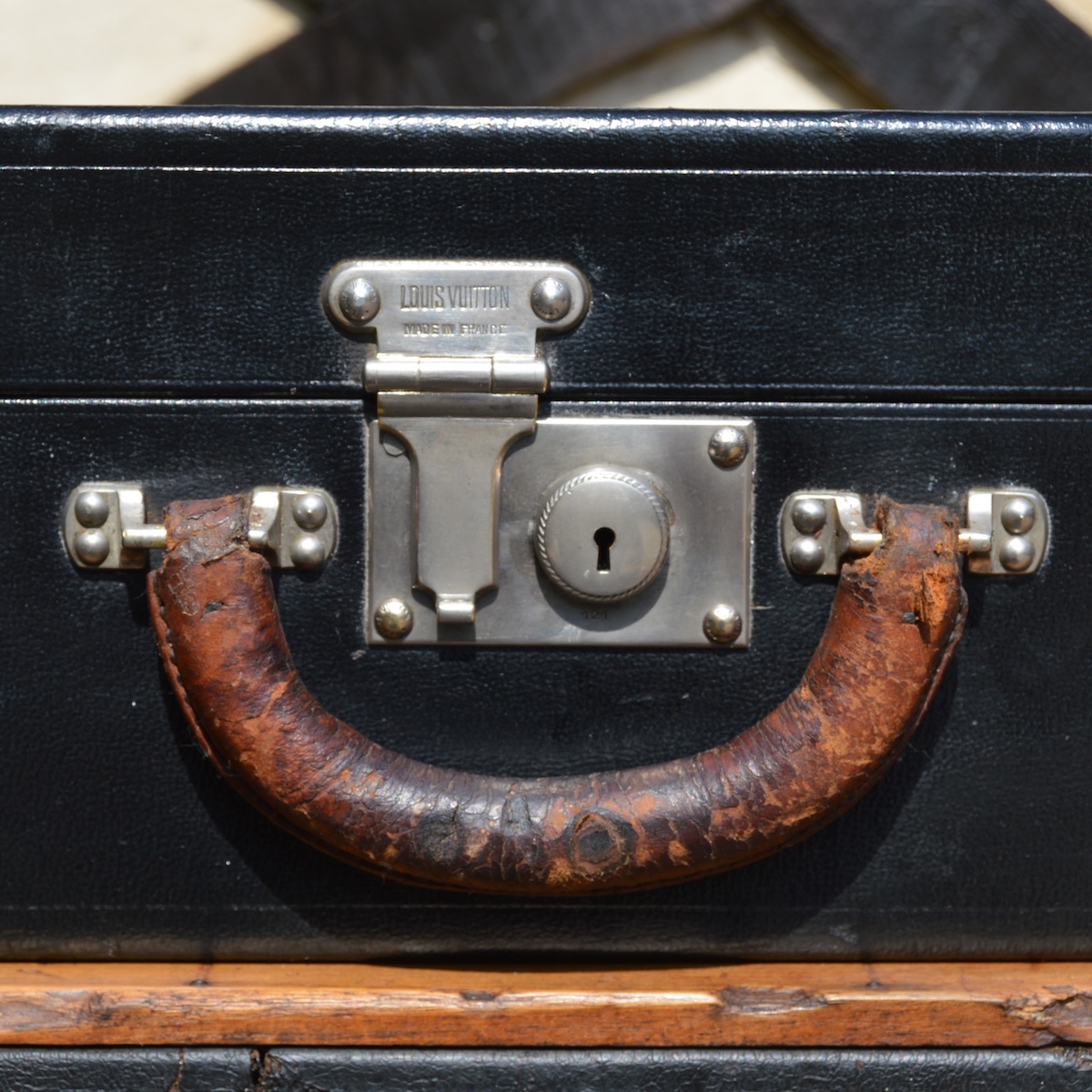

The specifics locks
Depending on the trunk model, very specific locks could be made for some collections. We find in particular specific locks for the models of the black cruise, for the George Vuitton trunk or on the "flowers" trunks.
As a traditional lock is not possible on a trunk with a front opening, we find clasps in two "folded" parts or "slide" systems to ensure this closure. Whatever the specificity of the trunk, the Louis Vuitton brand name is always engraved in the lock material.
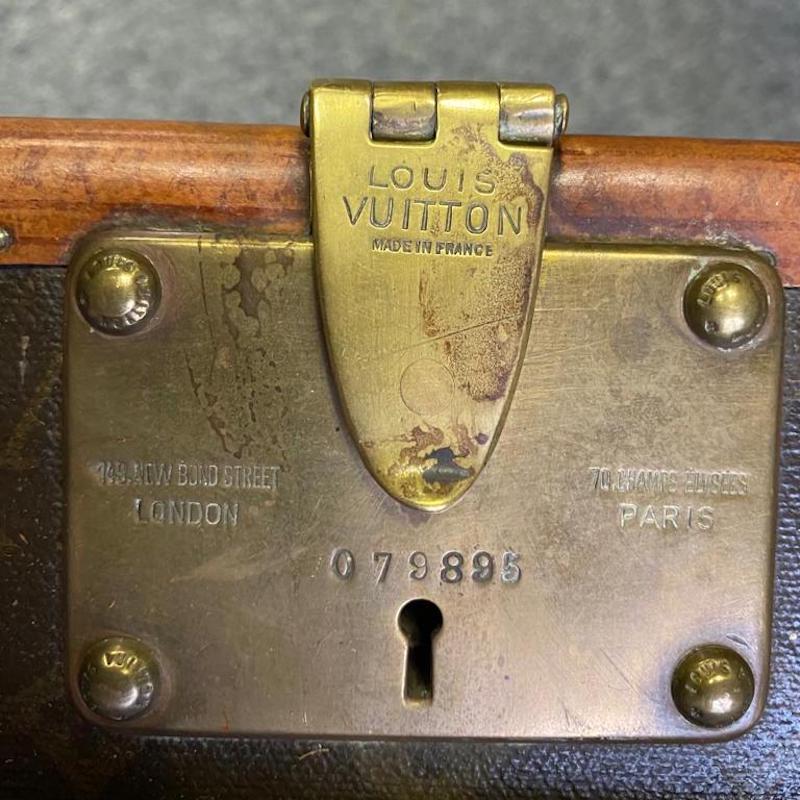
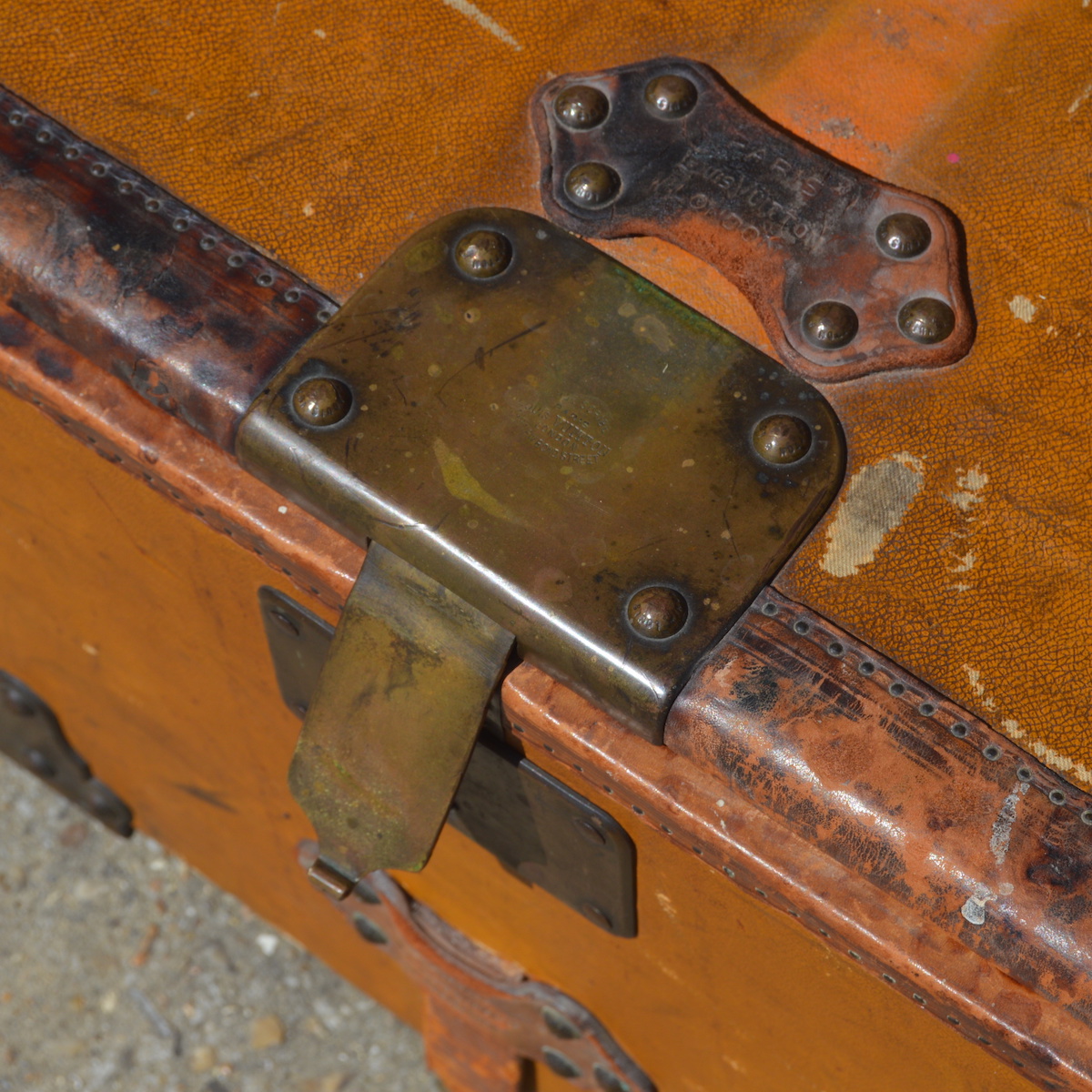
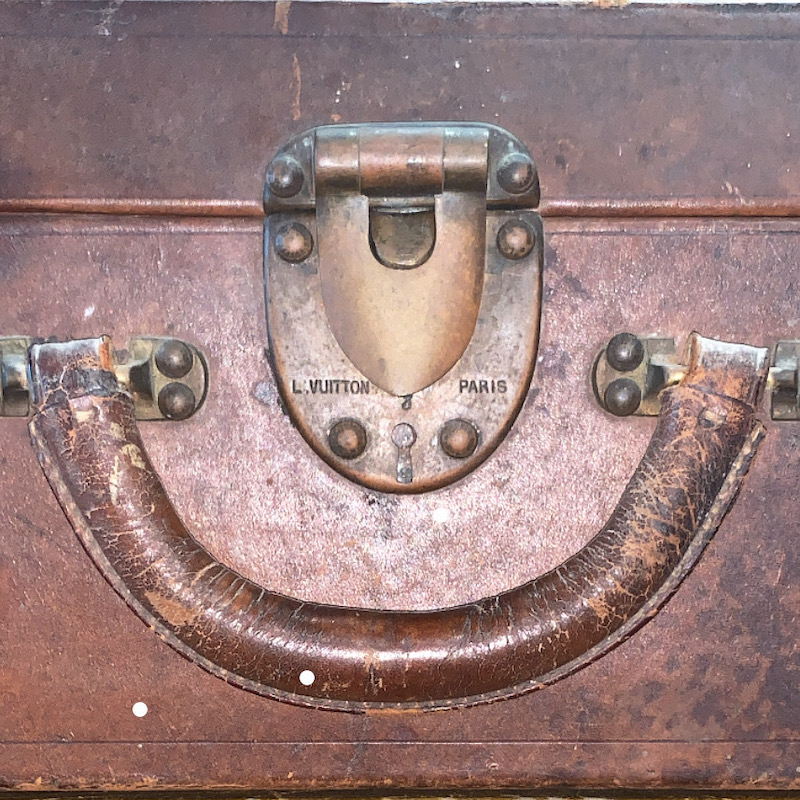
The automobile locks
For models mounted on the roof or on the wings of the car, the clasps had to be designed to prevent them from opening by themselves during operation of the vehicle. These clasps were therefore made of two parts with an interlocking system that allowed the tank to be fully secured to the trunk lid. Louis Vuitton is usually inscribed along the length of the buckle with the initials L.V. engraved on the head of the clasp.
Front opening models at the rear of the car (Autoski or Excelsior) were equipped with the same type of buckle with a lock.
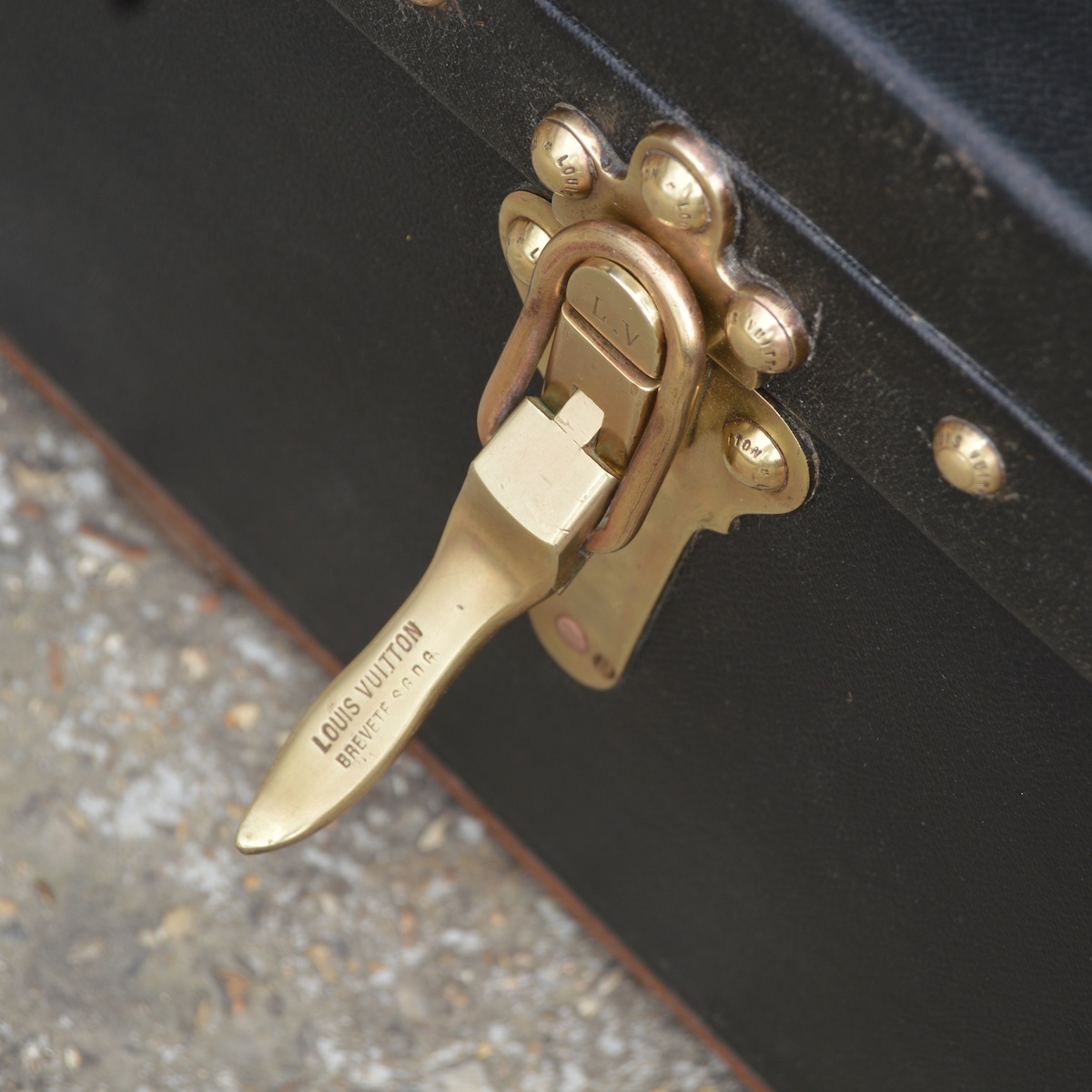
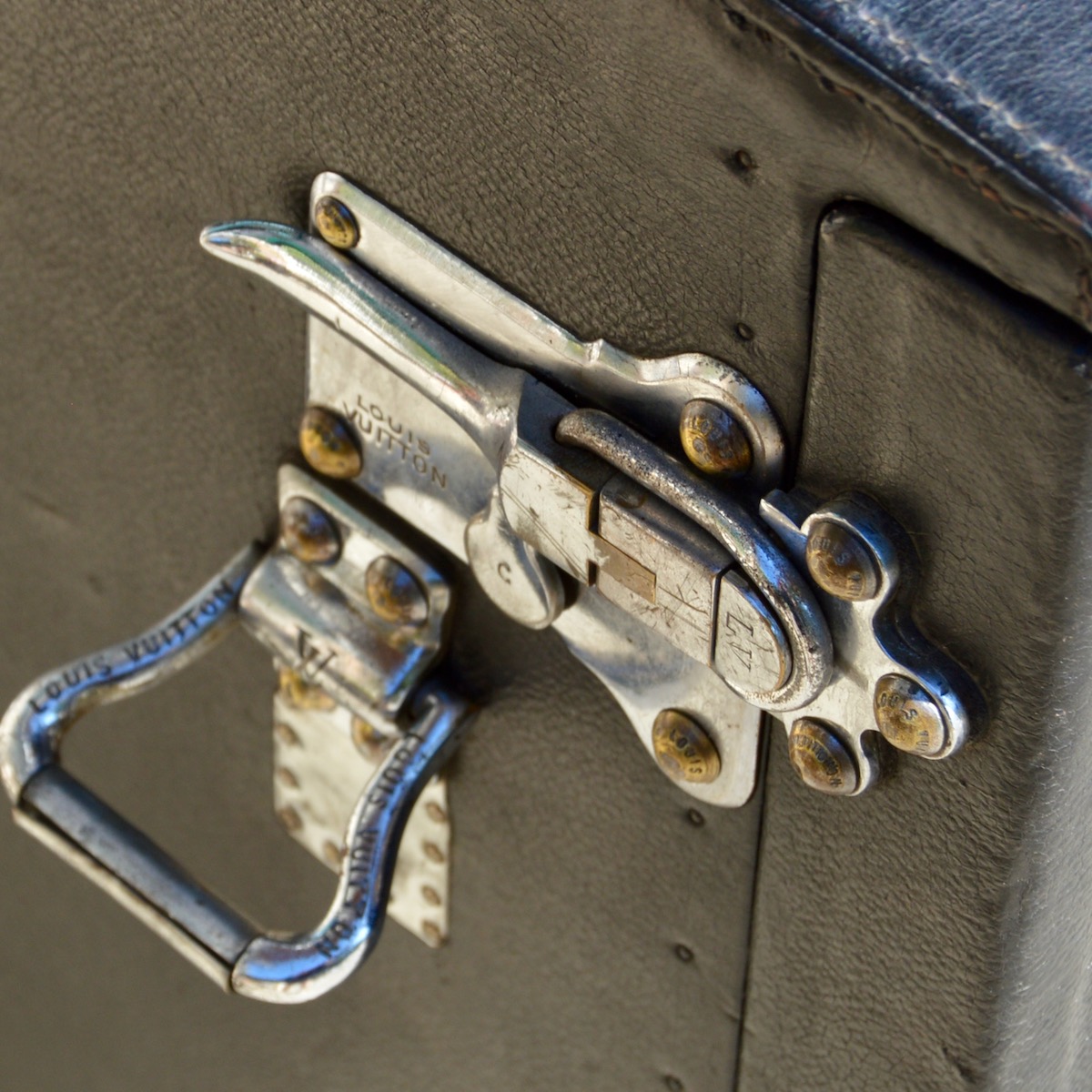
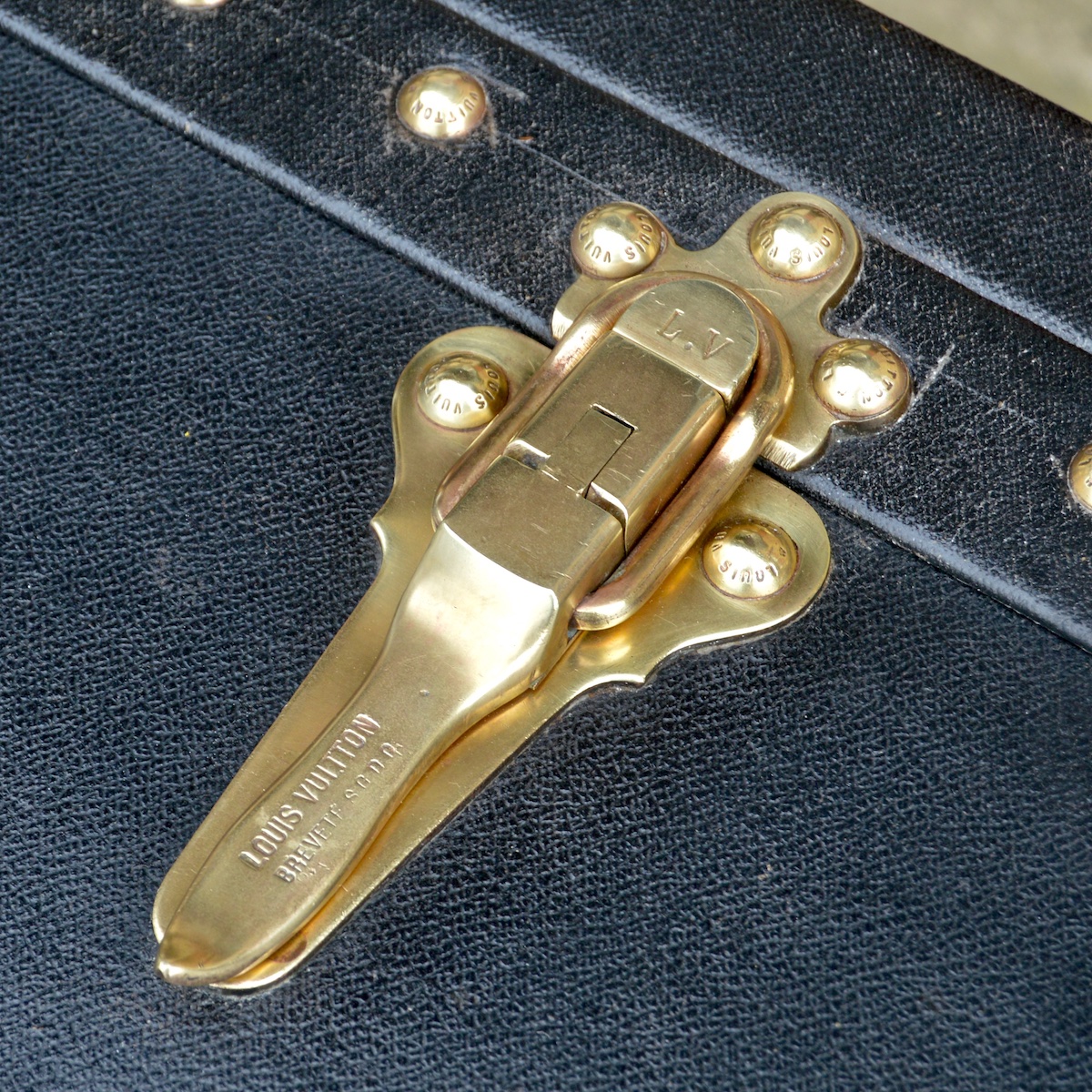
The actuals locks
The locks used on trunks today are all shaped like the iconic 1905 V-lock. The only difference is that the Louis Vuitton addresses on the head of the lock were replaced by the brand logo in the 1940s.
The push locks have also remained unchanged since the 1940s. New locks have also appeared on the small hard cases of some collections since Virgil Abloh joined Louis Vuitton.
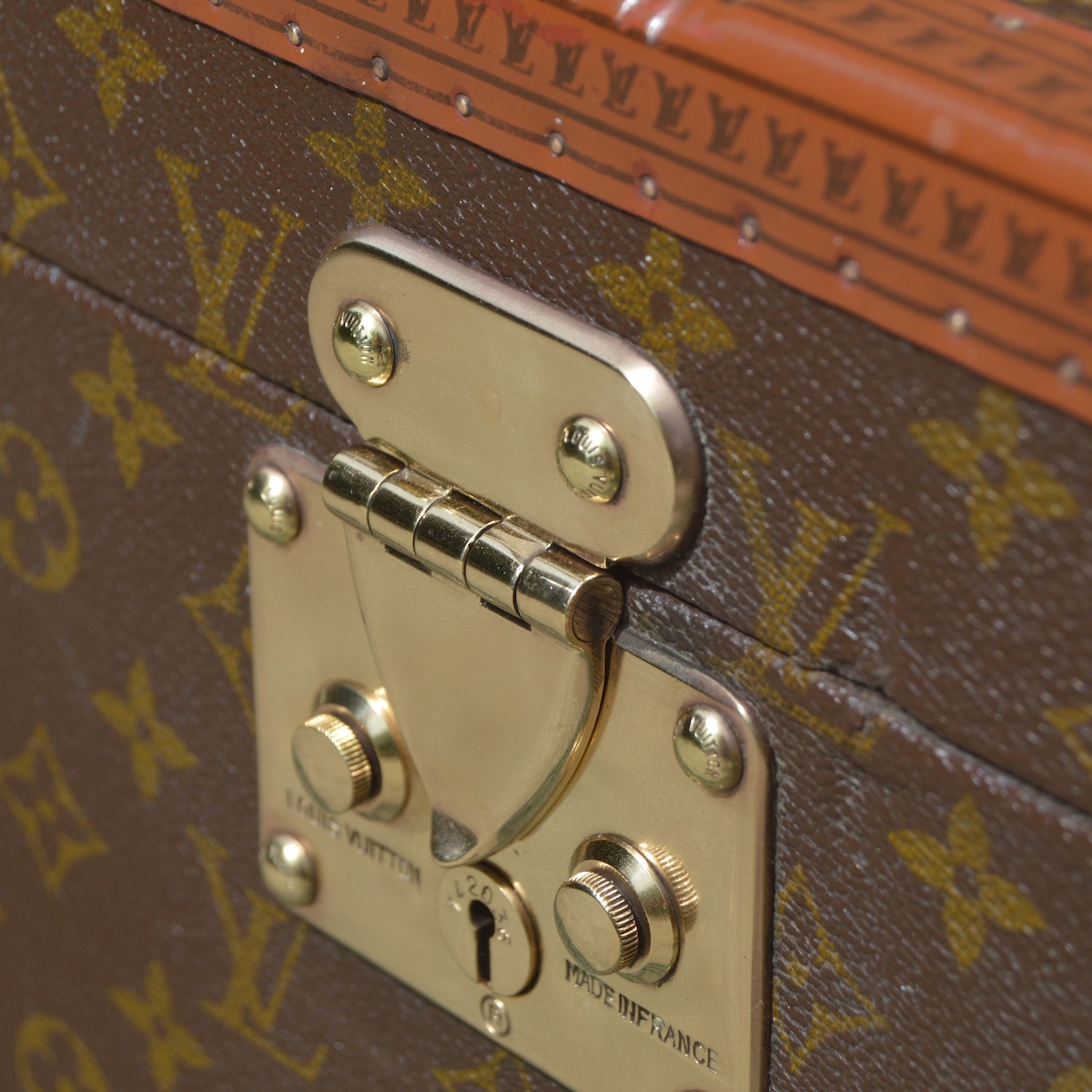
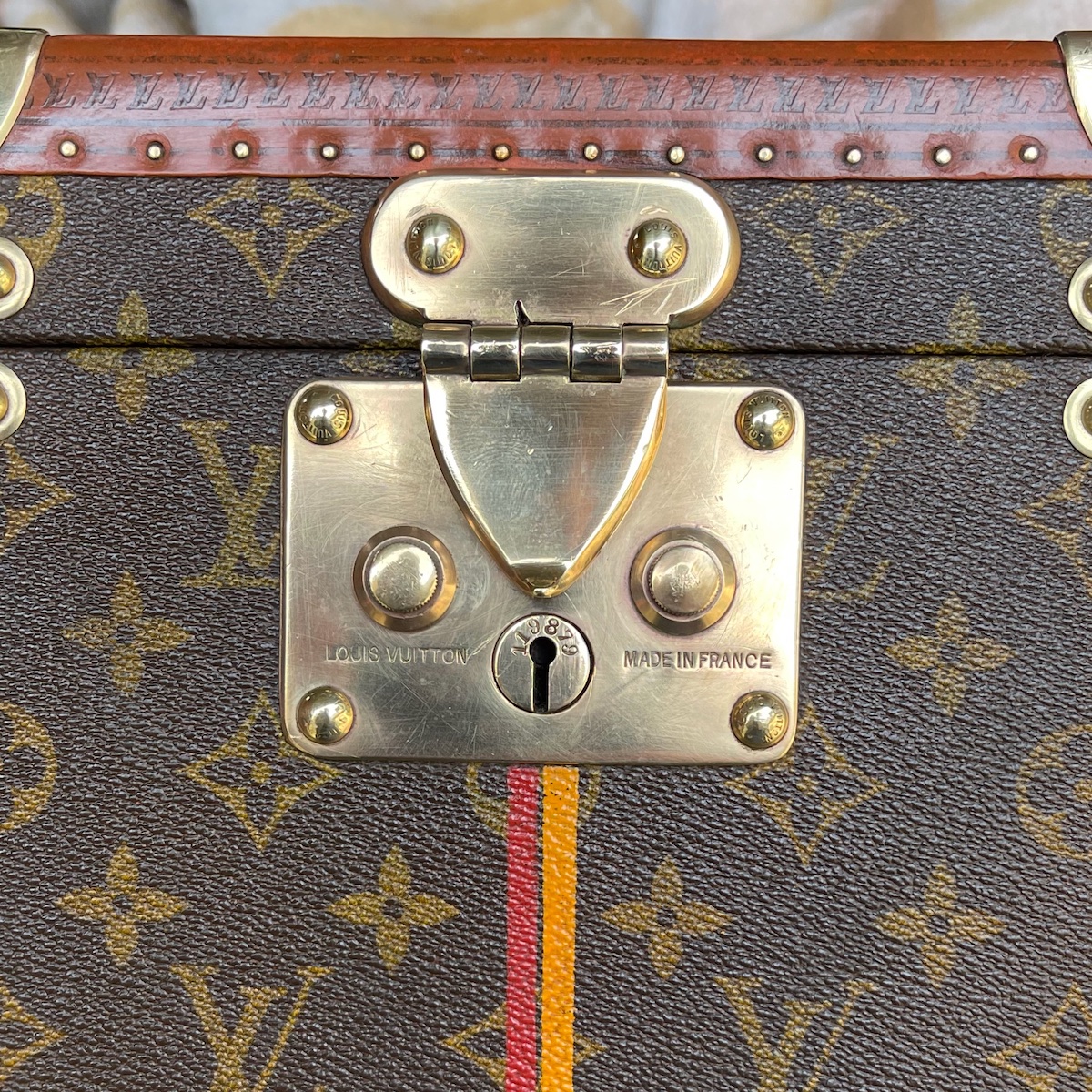

The « crapauds »
The toads (also called frogs or grasshoppers) at Louis Vuitton are all very similar overall, with a high part (on the bonnet) and a low part (on the bowl). The initials L.V are engraved in the centre of the piece. More imposing and "artisanal" shapes were seen until the 1890s, with forged and hand-made pieces.
Around the 1890s, Louis Vuitton simplified the manufacture of these clasps by automating them further. From then on, we notice the appearance of more rectilinear curves on the piece and much larger productions. In the 1950s, the LV logo in a circle replaced the traditional L.V. initials of the trunk maker. The simplification of the curves of the piece and the automation of their production (the craftsman is now only responsible for riveting the two brass pieces together) are also to be noted.

